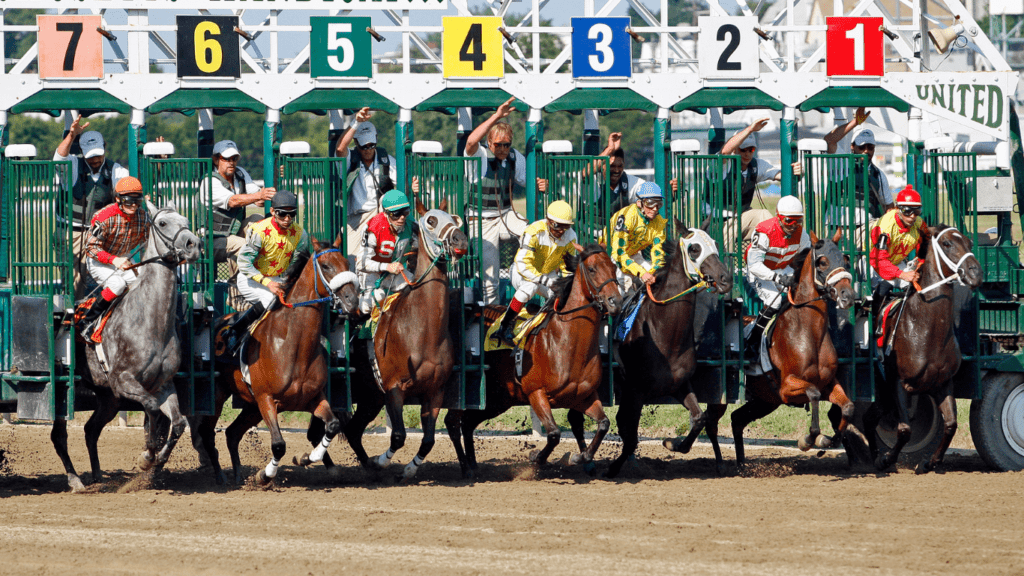Understanding the Basics of Horse Racing
A bettor’s journey begins with understanding horse racing’s fundamental structure. The sport involves various types of races, including flat racing, steeplechasing, and harness racing.
Types of Races
Knowing the types of races helps in making informed bets.
- Flat Racing: Horses run on a level track. Most prevalent in locations like the United States and Europe.
- Steeplechasing: Horses jump over obstacles. Common in countries like the United Kingdom and Ireland.
- Harness Racing: Horses pull a driver in a sulky. Popular in North America and Australia.
Race Classes and Grades
Classifying races indicates the quality of competition.
- Claiming Races: Horses are available for purchase.
- Maiden Races: Horses that haven’t won a race.
- Allowance Races: Horses carry weight limits, not for sale.
- Stakes Races: Feature top-quality horses and higher purses, often graded (Grade I, II, III).
Key Racing Terms
Grasping racing terms aids in analyzing races.
- Pace: The speed at which a race is run.
- Handicap: Weight added to horses to level the playing field.
- Post Position: The horse’s starting gate position.
- Furlong: A measure of distance (220 yards or 1/8 mile).
Understanding Past Performances
Analyzing a horse’s past performances provides insight. Look at past race results, track conditions, and distances. Use tools like performance charts and speed figures.
Factors Influencing Race Outcomes
Several factors affect a race’s outcome.
- Jockey: The rider’s experience and skill.
- Trainer: The trainer’s track record and horse preparation.
- Track Conditions: Weather and surface impact performance.
Betting Odds and Types
Odds reflect a horse’s winning probability and potential payout. Common bet types include win, place, and show bets. Exotic wagers like exacta and trifecta offer larger payouts but are riskier.
Master these basics to build a solid foundation for smarter betting. Detailed knowledge will enhance your ability to predict outcomes more accurately.
Key Strategies for Betting on Horse Racing

In horse racing, crafting a solid betting strategy enhances your chances of success. I’ll detail key methods that have consistently proven effective.
Analyzing Past Performances
Examining historical data helps identify patterns. Focus on past performances of horses in similar races, as past success in comparable events indicates future potential. Look at finish positions, margins of victory, and times achieved. For instance, if a horse consistently finishes strong in similar distance races, it’s likely a good performer over that distance.
Considering Track Conditions
Track conditions significantly influence race outcomes. Wet, dry, sloppy, or firm tracks suit different horses. Check horses’ past races under similar conditions. For example, if a horse thrives on firm tracks, it’s likely to perform well under those conditions again. Refer to the track’s condition on race day for optimal bets.
Understanding Odds and Payouts
Grasping how odds and payouts work is crucial. Odds indicate the probability of an event and inform potential payouts. Lower odds mean higher chances but lower returns, while higher odds suggest lower chances but higher rewards. For example, a horse at 2/1 odds has a higher winning probability than one at 10/1. Choose bets based on both your risk tolerance and potential profit.
Jockey and Trainer Statistics
Jockey and trainer records provide insights into their performance. Successful jockeys often enhance a horse’s chances of winning, while experienced trainers prepare horses better. Review statistics like win rates, especially in similar race types. For instance, a jockey with a high win rate in sprints increases a horse’s likelihood of excelling in short races.
Popular Types of Bets
Understanding the popular types of bets in horse racing enhances a bettor’s strategy. Various bets cater to different risk levels and potential payouts.
Win, Place, and Show Bets
- Win Bets: Betting on a horse to finish first. It’s straightforward and offers the highest payout among the three common bets.
- Place Bets: Betting on a horse to finish either first or second. Place bets provide moderate payouts because the chances of winning are higher than win bets.
- Show Bets: Betting on a horse to finish first, second, or third. Show bets have the lowest risk and therefore offer the smallest payouts. These are suitable for beginners looking to build confidence without significant risk.
Exotic Bets: Exacta, Trifecta, Superfecta
- Exacta Bets: Betting on the first two horses to finish in exact order. The higher complexity involves more risk, but the payouts are also higher.
- Trifecta Bets: Predicting the first three horses in the correct order. Trifectas are more challenging but can yield substantial returns if successful.
- Superfecta Bets: Predicting the top four finishers in precise order. Superfectas offer the highest payouts among standard exotic bets due to their difficulty.
Selecting the right type of bet depends on the bettor’s confidence and risk tolerance. Bettors should use past performance analysis and track conditions to inform their choices.
Advanced Betting Techniques
Advanced betting techniques provide an edge by refining strategies and incorporating sophisticated methods. I’ll discuss handicapping horses and betting systems to help enhance your betting success.
Handicapping Horses
Handicapping horses involves a detailed analysis of various factors that could impact race outcomes. I consider the following when handicapping:
- Form: Recent performance matters. A horse consistently finishing in top positions often indicates strong form.
- Class: Evaluating the level of competition a horse has faced. Moving up or down in class can significantly affect performance.
- Speed Figures: Numerical ratings given to horses based on their race times. Higher speed figures generally indicate faster horses.
- Pace: How the race will be run. Front-runners may have an advantage on certain tracks, whereas closers might benefit on others.
- Post Position: The starting gate a horse is assigned. This can affect its ability to get a clean break, especially in shorter races.
- Jockey/Trainer Stats: The track record of the jockey and trainer. Successful jockeys and seasoned trainers often contribute to a horse’s odds of winning.
Betting Systems
Betting systems offer structured approaches to placing bets. I use and recommend the following systems:
- Martingale System: Doubling the bet after every loss. It aims to recover previous losses when a win is eventually secured.
- Proportional Betting: Betting a percentage of the bankroll. This adjusts the bet size based on the bankroll’s current size, reducing the risk of substantial losses.
- Level Stakes: Betting the same amount on each race. This simplifies betting, mitigating the risk of large losses on consecutive bets.
- Hedging: Placing multiple bets to cover different outcomes. This can secure a profit if different scenarios can lead to a win.
- Value Betting: Identifying and betting on horses with higher odds than their actual win probability. It focuses on long-term profitability rather than short-term wins.
These advanced betting techniques, when applied effectively, can significantly improve your chances of success in horse racing betting.
Money Management Tips
Effective money management is crucial for long-term success in horse race betting. Here are some key tips to improve budgeting and avoid common pitfalls.
Setting a Budget
Establishing a budget helps control spending and ensures you bet responsibly. Allocate a fixed amount of money specifically for betting, separate from essential expenses like rent and groceries. For example, setting aside $200 monthly for betting keeps finances organized. Sticking to this budget prevents overspending and minimizes financial risk. Regularly reviewing your budget and adjusting it based on your betting performance helps maintain discipline and financial stability.
Avoiding Common Pitfalls
Understanding common pitfalls in horse race betting enhances decision-making and protects your bankroll. One common mistake is chasing losses; placing larger bets to recover lost money often leads to even greater losses. Instead, stick to your budget and betting strategy, even after a losing streak. Another pitfall is not diversifying bets; placing all bets on a single horse or race increases risk. Spread your bets across different races and horses to mitigate losses. Prioritizing research over impulsive betting improves chances of success. Avoid betting based solely on emotions or hunches without analyzing past performances and track conditions.
Effective money management ensures sustainable betting practices and enhances overall enjoyment of horse racing.


 Michaello Thomasters, the visionary founder of Bet Roll Gamble, has built a dynamic platform that serves as a hub for betting enthusiasts across various arenas, including sports, poker, horse racing, and esports. With a passion for providing valuable insights and strategies, Thomasters aimed to create a space where both novice and experienced bettors can enhance their skills and stay ahead of trends.
Michaello Thomasters, the visionary founder of Bet Roll Gamble, has built a dynamic platform that serves as a hub for betting enthusiasts across various arenas, including sports, poker, horse racing, and esports. With a passion for providing valuable insights and strategies, Thomasters aimed to create a space where both novice and experienced bettors can enhance their skills and stay ahead of trends.